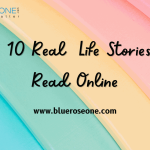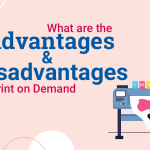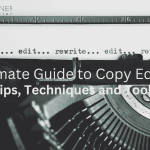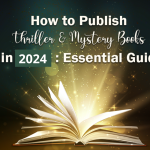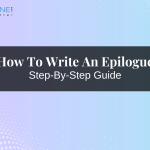Getting Started: Crafting Your Memoir
Memoirs are strong literary works that allow people to share their own experiences, memories, and reflections with the rest of the world. Writing and publishing a memoir may be a rewarding venture, whether you’re an aspiring writer looking to capture your life’s journey or someone looking to leave a lasting legacy.
In this blog, we’ll look at how to write a fascinating memoir and how to navigate the world of memoir publication.
- Getting Started: Crafting Your Memoir
- Elements of a Compelling Memoir
- Writing Style and Techniques
- Navigating the Publishing Process
Getting Started: Crafting Your Memoir
Choosing Your Focus: A well-defined major subject or emphasis is the cornerstone of a fascinating memoir. This theme acts as the guiding thread that connects your story. Consider the crucial events, noteworthy experiences, or transforming lessons you want to share with your audience. This stage establishes the tone for your book, guiding the narrative and assisting you in crafting a story that connects with authenticity and purpose.
Gathering Memories: Explore your past for raw materials for your book, such as memories, tales, and specifics. These fragments make up the mosaic of your life’s journey. Approach this approach with openness and curiosity, documenting not just the significant milestones but also the little events that have influenced you. Organise these pieces chronologically to guide your readers through your life’s history, or thematically to bring comparable events together for a more nuanced analysis.
Creating Authenticity: The foundation of a successful memoir is honesty. Accept your flaws and communicate your feelings honestly, bringing readers into your inner world. Strive to portray your experiences, ideas, and feelings as they are, allowing your story to connect with real sincerity. This vulnerability not only strengthens your relationship with your readers, but it also adds depth and relatability to your narrative. By expressing your actual self, you urge readers to join you on a sincere journey of self-discovery and progress.
Elements of a Compelling Memoir
Captivating Opening: A great beginning is vital for capturing your readers’ interest. Begin your memoir with an enticing hook—a dramatic shift, a challenging topic, or a vivid description that establishes the tone. This first spark entices people to read on, eager to discover the trip you’re going to share.
Character Development: Characters in your memoir should be vividly depicted. Investigate their personalities, goals, and roles within your story, whether it’s yourself or others. These rich character profiles give depth and authenticity to your tale, allowing readers to identify with the people who shaped your experiences.
Emotional Resonance: Use the power of universal emotions to connect with your audience. Share your happy moments, struggles, victories, and insecurities. By expressing your emotions and experiences, you build an emotional connection that crosses personal borders, resonating with readers who have felt similarly in their own lives.
Setting and Atmosphere: By clearly depicting the venues where crucial events happened, you may transport your readers to the heart of your tale. Invoke the senses and immerse readers in the scenario by painting a realistic picture of the surroundings. The environment you create adds depth and realism, which improves their grasp of the events and feelings you’re expressing.
Theme and Reflection: Every memoir contains underlying themes or messages that allow for introspection and contemplation. Take time when you retell your experiences to dive into the deeper meanings and lessons they carry. Share your experiences with personal development and knowledge. By connecting your tale with bigger lessons, your memoir becomes a source of inspiration and connection for your readers, as well as a personal narrative.
Writing Style and Techniques to Create a Memoir.
Voice and Tone: The voice of your memoir is your individual literary fingerprint, representing your personality and point of view. It is the filter through which readers see your tale. Determine whether your tone of speech is reflective, funny, or emotional. Aligning the tone of your story with its mood improves reader connection. A thoughtful tone may be appropriate if your story is introspective. A funny tone may add appeal to a lighter memoir. A touching tone might be appropriate for a story about overcoming hardship. Experiment with numerous accents and tones to discover the one that best conveys the core of your tale.
Dialogue: Dialogue brings your story to life by demonstrating real-world encounters. Use talks to highlight the complexities, connections, and conflicts of the characters. Dialogue provides realism by immersing readers at key times. Create discussions that are appropriate for the times and characters you’re portraying. This strategy not only increases reader interest, but it also adds a dynamic and relevant layer to your story.
Show, Don’t Tell: Allow readers to experience your memoir’s emotions rather than merely hearing about them. Rather than stating, “I was nervous,” explain your quivering hands, rushing heart, and racing thoughts. This sensory immersion builds a visceral connection with readers, making your trip palpable. Incorporate rich pictures, textures, and fragrances into your writing. By using this strategy, you allow readers to walk in your footsteps, creating a more immersive and memorable reading experience.
Pacing: The rhythm that takes readers through your story is known as pacing. Strive for balance by alternating between contemplative periods and exciting activities. Dwell on the pivotal events that created your story, digging into emotions and insights. Intersperse moments of activity and interaction to keep the energy going. Pacing is a tricky balance; if it is too sluggish, readers may lose interest, while if it is too quick, they may feel alienated. A well-paced memoir has a gratifying ebb and flow that keeps readers interested from beginning to end.
Navigating the Publishing Process to Publish a Memoir.
Publishing a memoir involves several steps, from writing and editing your manuscript to finding a publisher or self-publishing. Here’s a step-by-step guide on how to publish a memoir:
Research Literary Agents and Publishers: Researching literary agents and publishers is a critical step in the journey to traditionally publish your memoir. Start by identifying professionals who specialise in memoirs and have a proven track record in the genre. Look for agents or publishers who have successfully represented or published memoirs similar to yours, especially those that share themes or styles. This alignment increases the likelihood that they will understand and appreciate your work. When researching, consider factors like the agent’s or publisher’s reputation, client list, and recent successes. Tailoring your submissions to those who have experience with your type of memoir can significantly increase your chances of getting noticed. Agents and publishers who resonate with your story are more likely to champion your work and help it find an audience. Remember that finding the right literary partner can be a transformative step in your publishing journey.
Query Literary Agents (if traditional publishing): Querying literary agents is a pivotal step if you’re pursuing traditional publishing for your memoir. Your query letter serves as your initial pitch, introducing yourself and your memoir concisely and persuasively. It should include a captivating hook, a brief summary of your memoir, and a compelling author bio. Follow each agent’s submission guidelines meticulously, as they can vary significantly. Prepare yourself for rejection, as it’s a common part of this process. Literary agents receive numerous queries, and not every manuscript aligns with their interests or vision. Be persistent and open to revising your query letter based on feedback or changing market dynamics. Finding the right literary agent who believes in your work can be a transformative step towards securing a publishing deal with a reputable publishing house.
Self-publishing (if desired): Self-publishing offers creative control and flexibility but comes with the responsibility of managing every aspect of publishing, from editing and cover design to marketing and distribution. Platforms like Amazon Kindle Direct Publishing (KDP) enable you to publish your memoir as an eBook or paperback. With self-publishing, you have the freedom to set your own timeline and retain a higher percentage of royalties. However, it’s essential to invest in professional cover design and formatting to ensure your book looks and reads professionally. A compelling cover is crucial, as it’s the first impression readers have of your memoir.
Cover Design and Formatting: Professional cover design and formatting play a pivotal role in the success of your memoir. Your book cover is the first impression readers have of your work, and it should capture the essence of your story while grabbing their attention. A compelling cover design not only attracts potential readers but also conveys the genre, mood, and themes of your memoir. Hiring a professional designer who understands your vision can make a significant difference in the marketability of your book. Proper formatting is equally crucial, ensuring that your memoir is presented in a clean, readable, and consistent manner. This applies to both digital and print formats. Well-formatted text enhances the reading experience, making it easier for readers to engage with your story. You can choose to hire formatting experts or use self-publishing tools that offer formatting templates to assist you in achieving a polished, professional look for your book.
ISBN and Copyright: Acquiring an ISBN (International Standard Book Number) is essential for your memoir’s distribution and cataloguing in libraries and bookstores. Each ISBN is unique to your book and allows for accurate tracking and identification, which is especially important for print editions. ISBNs are typically obtained through designated agencies or, in some cases, through self-publishing platforms. Copyright registration is another critical step to protect your intellectual property rights. While your work is automatically copyrighted upon creation, registering it with the copyright office provides legal evidence of your ownership and can be crucial if you need to take legal action against plagiarism or unauthorised use of your work. It’s an essential safeguard for your memoir, offering peace of mind and legal recourse if needed.
Publish and Distribute: Selecting the right publishing platforms aligns with your publishing goals and audience reach. Whether you choose traditional or self-publishing, your memoir should be made available for purchase on major online retailers like Amazon, Barnes & Noble, and others. This broadens your book’s accessibility to a global audience. You’ll also need to decide whether to publish it exclusively on one platform or distribute it widely across multiple retailers. Exclusivity can have benefits, such as access to promotional programmes, but may limit your reach. A wider distribution strategy can expose your memoir to more readers but requires effective marketing to stand out in a competitive market. Balancing these choices depends on your objectives and your understanding of your target audience.
Marketing and Promotion: Developing a comprehensive marketing plan is crucial to promoting your memoir effectively. This plan should encompass various strategies and channels to reach your target audience. Utilise social media platforms to engage with potential readers, create an author website or blog to showcase your work and connect with your audience, and consider in-person promotional activities like book signings or readings. Engaging with book bloggers and local media outlets can help generate reviews and interviews, increasing your memoir’s visibility. Leverage email marketing to communicate with your readership and offer promotions or updates. A well-thought-out marketing plan, combined with consistent effort and engagement with your readers, is essential for building your memoir’s presence and increasing its chances of success in a competitive publishing landscape.
Build an Author Platform: Building an author platform is a crucial aspect of establishing yourself as a successful author, both before and after the publication of your memoir. Your platform is the means by which you connect with and engage your audience. To do this effectively, engage with potential readers through social media, where you can share insights into your writing process, discuss relevant topics, and build a community around your work. A personal website or blog serves as a central hub for your author brand, providing a space to share more about yourself, your memoir, and your writing journey. Connecting with other authors and participating in writing communities can help you exchange ideas, gain support, and cross-promote each other’s work. A strong author platform enables you to establish a loyal readership, making your marketing efforts more impactful as you have a ready audience eager to engage with your memoir and future projects.
Manage Distribution and Sales: After publication, it’s essential to actively manage the distribution and sales of your memoir. Continuously monitor your book’s sales performance through various channels and gather feedback from readers. Understanding your sales data and reader reviews can provide valuable insights into your book’s reception and help you make informed marketing decisions. Adapt your marketing strategy based on the data you collect. For example, if you notice that your memoir is performing well in a particular genre or category, you can tailor your promotional efforts to target that audience more effectively. Regularly update your book with any necessary revisions or improvements to ensure it remains relevant in the market. By staying engaged with your book’s distribution and sales, you can maximise its visibility and impact over time.
Remember that publishing a memoir can be a challenging but rewarding journey. Be patient, open to feedback, and persistent in your efforts. High-quality writing and effective marketing are key to your memoir’s success, regardless of whether you choose traditional or self-publishing.
Read: Learn How to Become a Travel Writer: Complete Guide for Travelogue Writing.
Writing and publishing a memoir is a journey of self-discovery and creative expression. By following these guidelines, you can craft a compelling memoir that resonates with readers and leaves a lasting impact. Whether you choose traditional publishing or take the self-publishing route, your memoir has the potential to inspire, entertain, and connect with people around the world. So, pick up your pen and begin documenting your unique story; the world is waiting to hear it.
Publish your book with BlueRoseONE and become a bestselling author. Don’t let your dream of becoming an author fade away, grab the opportunity now and publish your book – be it fiction, non fiction, poetry or more.








